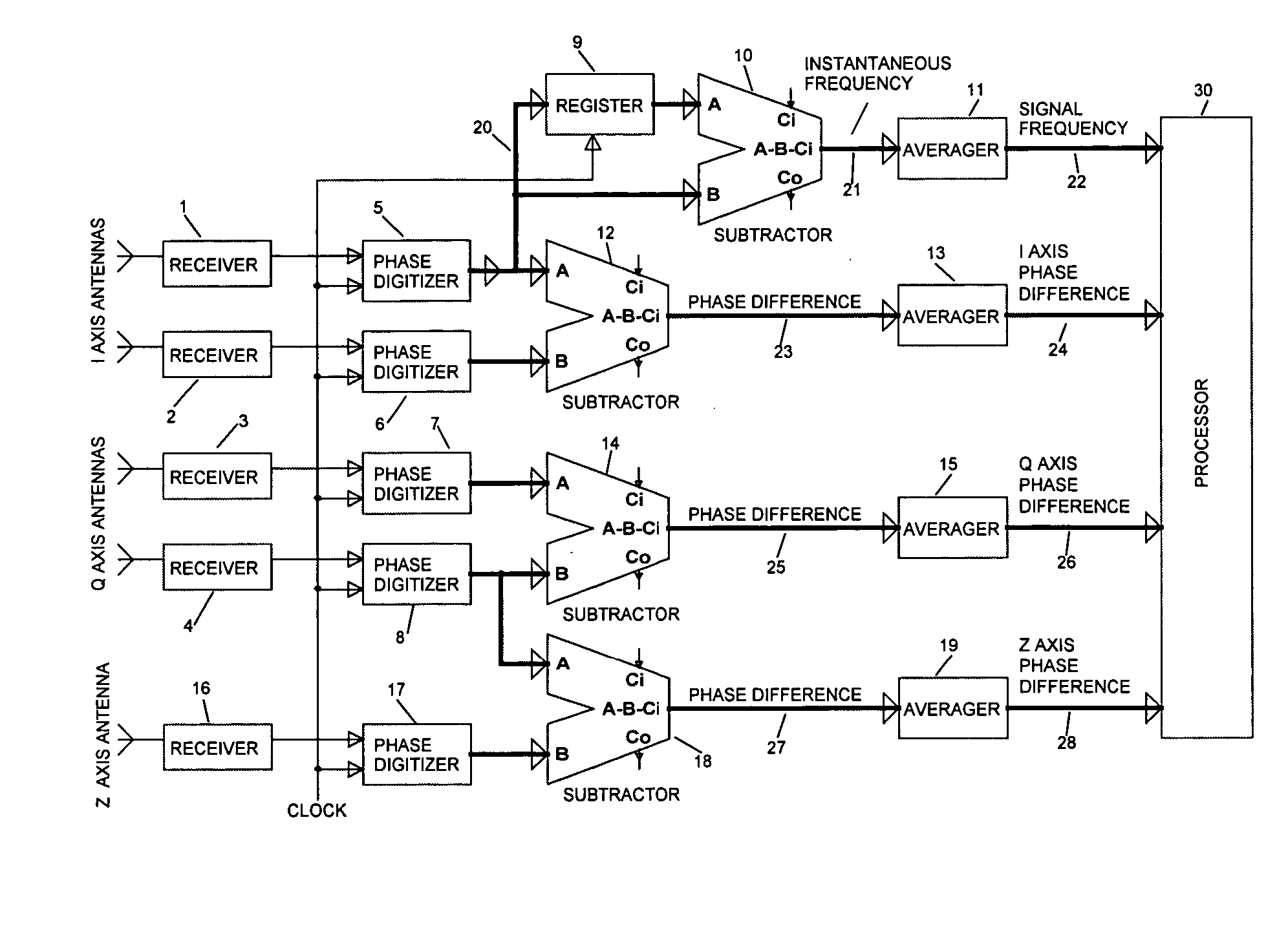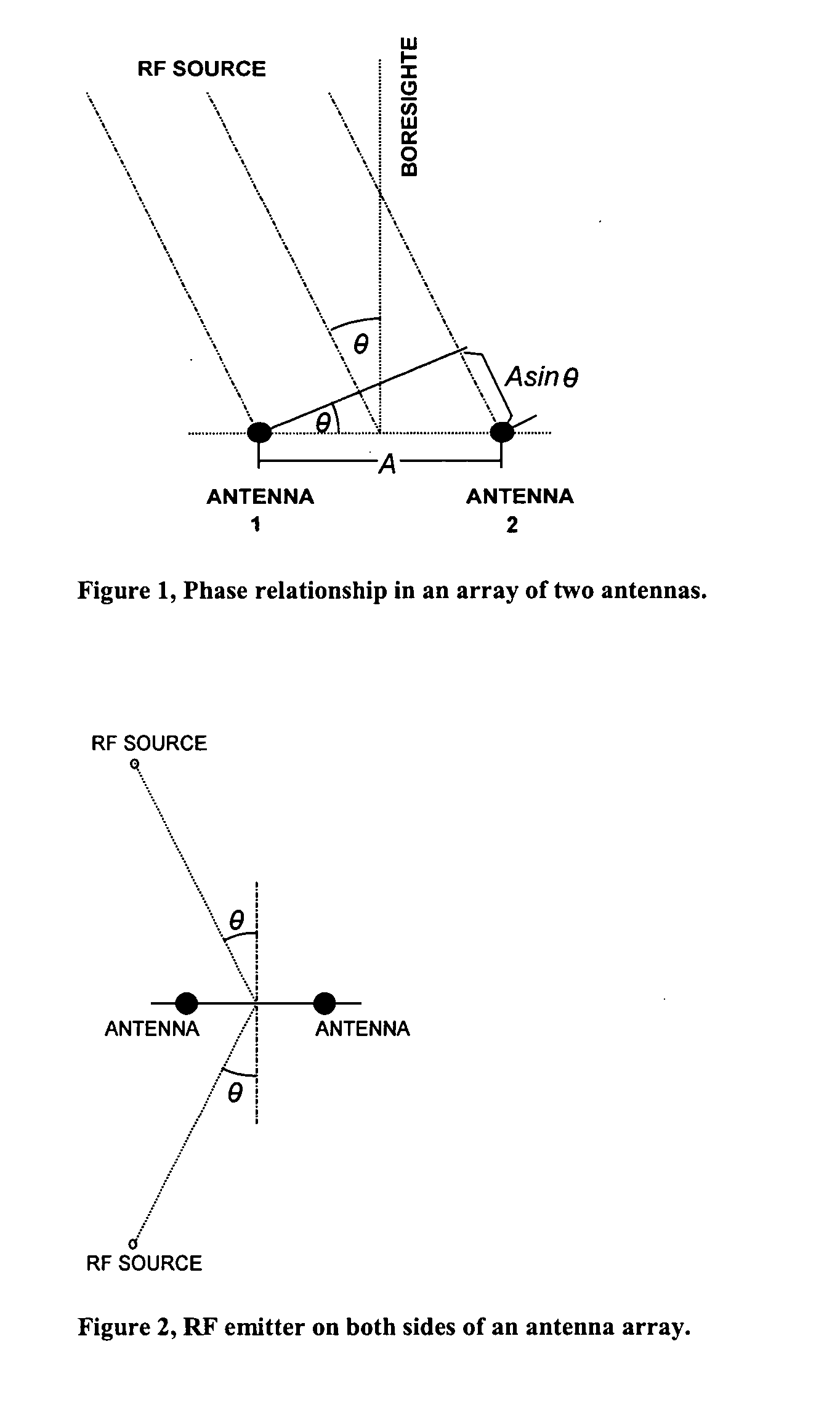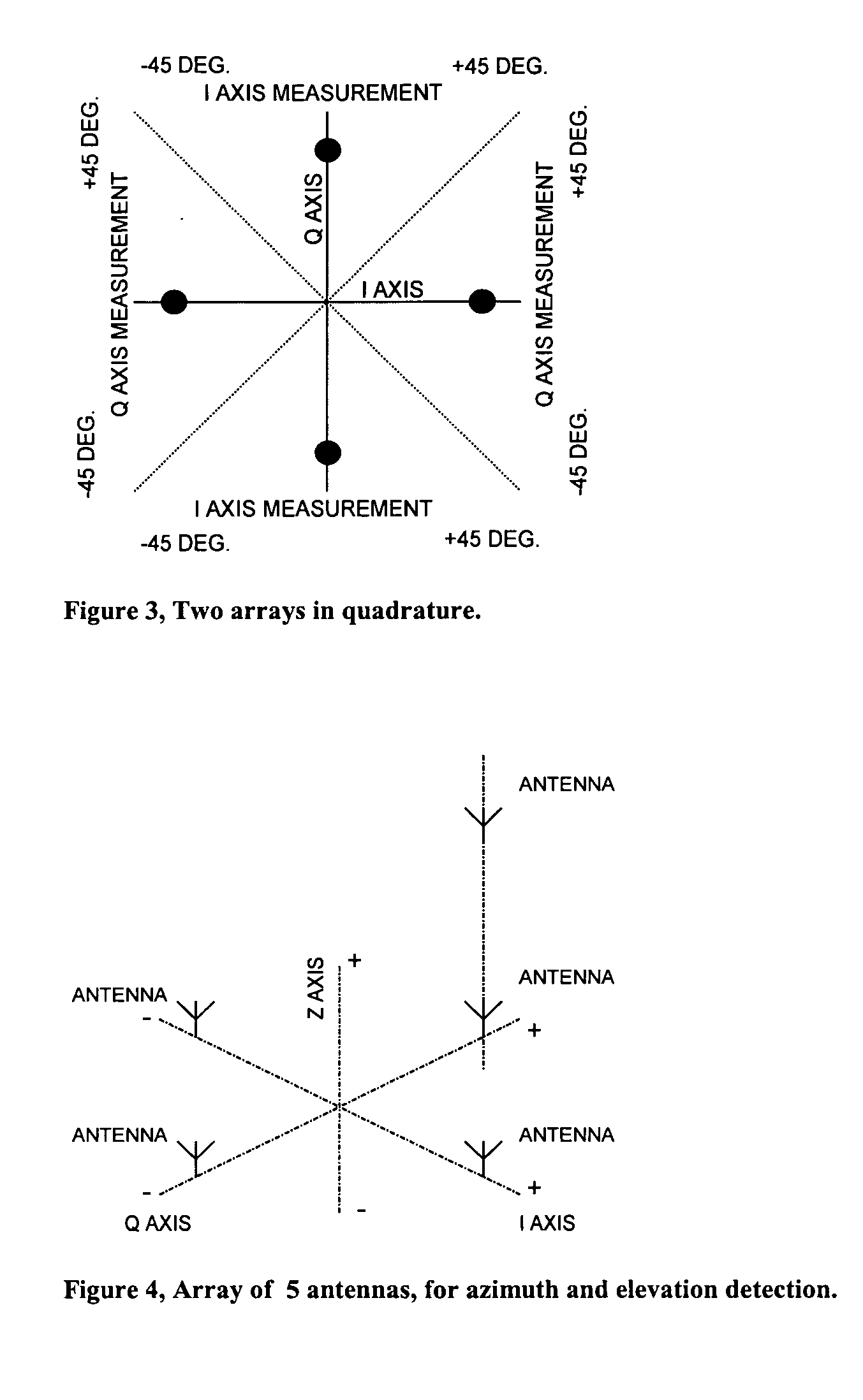Digital instantaneous direction finding system
a digital instantaneous and direction finding technology, applied in direction finders, direction finders using radio waves, instruments, etc., can solve the problems of system deception, deprived of its direction finding capabilities, and limited frequency range for which the direction finding system can provide correct azimuth or elevation information
- Summary
- Abstract
- Description
- Claims
- Application Information
AI Technical Summary
Problems solved by technology
Method used
Image
Examples
Embodiment Construction
[0036] To better understand the description of this invention, refer to FIGS. 6, 7, and 8. FIG. 6 shows an embodiment of the system capable of determining the azimuth and elevation of an emitter of RF signal. As shown, 5 antennas are used, each connected to a radio frequency receiver. An embodiment of a typical RF receiver is shown in FIG. 7. The signal received by the antenna (100), is aplified by the amplifier (101), and then filtered by a bandpass filter (102). The bandpass filter guarantees that onlt signals at frequencies within the operational limits of the system are passed down to the system. The bandpass filter (102) is followed by another amplification stage (103). The output of the second amplification stage (103) connects to a power splitter (104) which splits the output of the amplifier (103) into two signals identical to the output of the amplifier (103) in all respects except for the power, which is divided, one half (111), and the other half (112), which are connecte...
PUM
 Login to View More
Login to View More Abstract
Description
Claims
Application Information
 Login to View More
Login to View More - R&D
- Intellectual Property
- Life Sciences
- Materials
- Tech Scout
- Unparalleled Data Quality
- Higher Quality Content
- 60% Fewer Hallucinations
Browse by: Latest US Patents, China's latest patents, Technical Efficacy Thesaurus, Application Domain, Technology Topic, Popular Technical Reports.
© 2025 PatSnap. All rights reserved.Legal|Privacy policy|Modern Slavery Act Transparency Statement|Sitemap|About US| Contact US: help@patsnap.com



